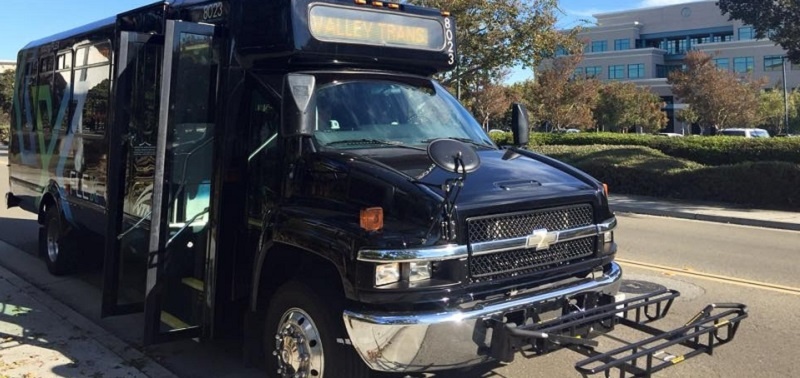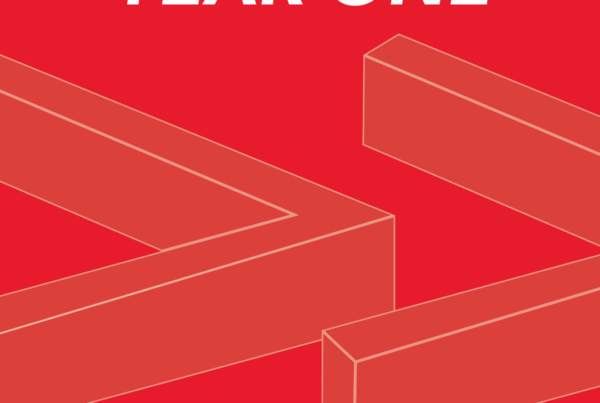In recent weeks, denizens of Silicon Valley may have noticed a new fleet of black shuttles prowling the streets.
They can be summoned by smartphone, use algorithms to generate dynamic routes and combine rides, and are built to provide commuters with fast and efficient access to the tech companies like Cisco and Samsung that dot the valley.
Despite its appearance, this isn’t a new microtransit service like Bridj or Chariot, or a new “Google Bus”-like shuttle. Actually, believe it or not, this is public transit.
The Santa Clara Valley Transportation Authority (VTA) is currently in the final stages of preparing to launch its new VTA FLEX pilot, set to debut this month. The project, which is funded by a $1.13 million Metropolitan Transportation Commission (MTC) Transportation Demand Management grant, will use four 26-seat shuttles to ferry passengers between transit stops and high-density employment and retail centers within a 3.25-square-mile section of Santa Clara County.
According to the VTA, the objective of the pilot is to increase transit ridership by identifying new service models that allow the agency to tap into new or minimally served markets. By increasing transit use, the pilot is also expected to help mitigate traffic congestion in the region and improve average VTA fare recovery rates.
More importantly, the project represents one of the first advances in a coming wave of transit innovation that will see likely public agencies adopt new advances in technology – like real-time ride matching and dynamic routing – that have been developed and refined by private sector operators over the past several years.
These new, flexible transit solutions have tremendous potential to expand agencies’ service areas, attract new riders, fill transportation gaps and provide more effective, sustainable ways to reach low-density communities and other traditionally hard-to-serve areas.
Several elements of the VTA’s pilot underscore the promise of these new service models, including:
Providing Dynamically Generated Routes
Breakthroughs in big data and mobile technology have allowed companies like Bridj and Chariot to develop complex algorithms that track transportation demand and optimize pick-ups, drop-offs and routing accordingly. Unlike traditional fixed-route transit, these companies match popular origin and destination pairings to generate new itineraries each day that correspond to changes in the way a city’s population is moving at any given time.
Additionally, these and other popular services like Uber Pool and Lyft Line have refined technology that allows drivers to combine rides in real time, often deviating by only a block or two to match passengers requesting rides along a similar route.
The VTA pilot leverages both these developments, using technology developed by RideCell, a San Francisco-based company that specializes in developing software for demand-response and hybrid transportation services.
While the pilot does have defined stops like a traditional bus, VTA FLEX shuttles do not travel a fixed route or have a fixed schedule. Instead, they use RideCell’s technology to guide vehicles between stops along an optimal route to pick up and drop off passengers in the most effective way possible.
The flexible nature of the VTA’s service makes it an ideal first/last mile solution, helping riders bridge the gap from fixed route transit – which works well for long-haul trips where large groups of people are moving in the same direction – to their final destination.
During off-peak hours, the VTA also envisions that employees who have left their cars at home can use the shuttles to run errands, grab lunch or travel to meetings. And, local residents can also use the service for their daily needs.
Offering Mobile Technology & a Seamless User Experience
In the age of services like Uber and Postmates, people have become accustomed to accessing services with a touch of their smartphone. Just like with ridesourcing companies, VTA’s FLEX pilot allows riders to request, track and pay for their rides from their phones using a free app available for download in the Apple Store and Google Play.
The convenience and tech many help appeal to new users – meaning VTA can not only increase its geographical reach but also help win over new “choice” transit riders – something that agencies everywhere are eager to achieve.
Additionally, the VTA has an opportunity to market the service through the commute programs of major employers in the area, which can further help reach and convert new transit users.
Keeping the Best Parts of Public Transit
Unlike many ridesourcing and microtransit providers – which have often been criticized for falling short when it comes to providing service for disabled and elderly passengers – the VTA pilot preserves the accessibility and affordability that make public transit so vital.
Each VTA shuttle is fully wheelchair accessible and also has two bike racks to encourage multi-modal travel. And if riders don’t have a smartphone, they can still hail a VTA FLEX shuttle using a computer or even a telephone.
Since it is publicly funded, VTA FLEX also won’t have to face the same burden as private sector operators who must ultimately generate revenue and provide returns to investors. That means it can keep the focus on what’s best for riders, and keep its prices affordable. Fare for a VTA FLEX trip will be only $3 per ride during peak commute times and $2 during off-peak times. Riders can also pay for the rides using their commuter pre-tax benefit.
While the pilot is not perfect – fare integration still needs to be explored, for instance, since at first FLEX shuttles won’t be linked with Transit Access Pass (TAP) cards – it represents a step forward and an oncoming shift in the public transit landscape. More transit agencies will undoubtedly follow the VTA’s lead in the coming year, either by licensing technology from providers or partnering directly with operators to provide the flexible, on-demand service that riders want.
In nearby Palo Alto, for example, the city’s Transportation Management Association (TMA) has started to explore the idea of subsidizing an on-demand shuttle service or partnering with ridesourcing companies to offer first/last mile service to transit to help reduce congestion and parking demand.
Meanwhile, the City of Santa Monica recently issued a Request for Proposal for a vendor to operate an app-driven demand response service to connect riders to its soon-to-be-completed Metro Expo Line stations during later evening hours, when public buses run less frequently.
At SUMC, we look forward to tracking the progress of these efforts and gauging their potential to increase access and mobility choice for riders of all abilities and income levels.
For more information about on-demand transportation trends, be sure to check out the summary of the microtransit panel from the 2015 Move Together national shared mobility conference as well as SUMC’s new Shared-Use Mobility Resource Guide. And, stay tuned for our forthcoming Transportation Research Board study on the interrelation of public transit and new on-demand shared mobility services, due to be released later this year.



